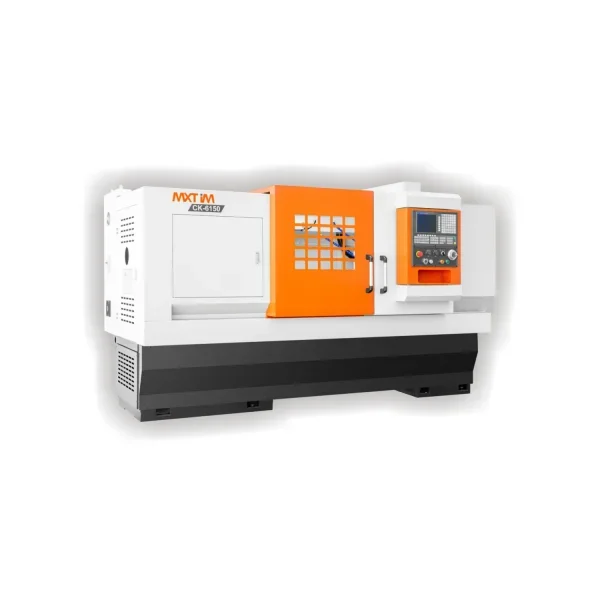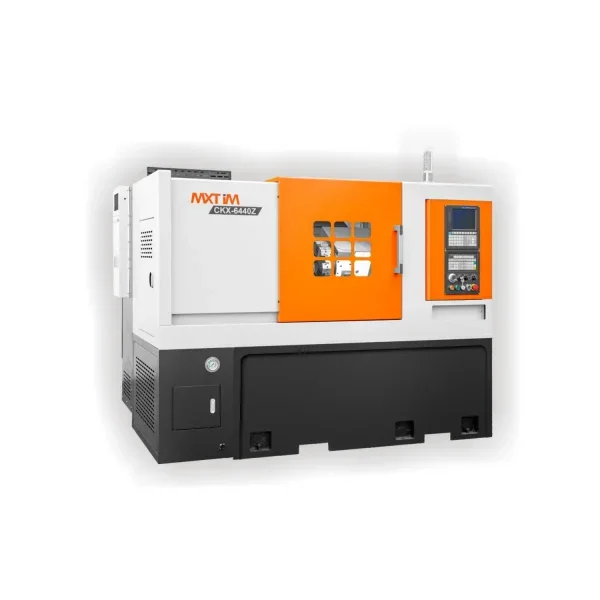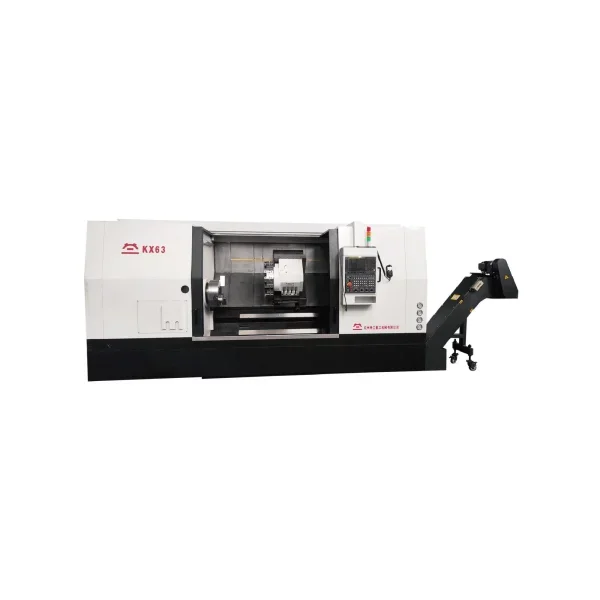In the ever-evolving world of machinery, the CNC (Computer Numerical Control) slanting bed lathe stands among the most advanced and essential tools of modern manufacturing. It offers remarkable precision and efficiency in shaping raw materials into complex workpieces. In this blog, we will delve into the operational mechanism of a CNC slanting bed lathe, providing a comprehensive understanding of its functions to both beginners and professionals in the field.
I. Overview of a CNC Slanting Bed Lathe
Before delving into the operational mechanism, let's understand what a CNC slanting bed lathe is. A CNC slanting bed lathe consists of a horizontal spindle mounted on a slanted bed, which enables gravity to help with chip removal during machining. This design ensures better rigidity, accuracy, and facilitates chip disposal. Now, let's explore its operational mechanism in detail.

II. Main Components and Their Functions
a) Bed: The bed is the foundation of a CNC slanting bed lathe. Made of high-quality cast iron, it provides stability and absorbs vibrations during operation. The slanted design improves ergonomic accessibility for operators and contributes to excellent chip evacuation.
b) Spindle: The spindle holds the workpiece and rotates it at high speed. It is driven by a series of gears, belts, or direct-drive motors, ensuring precise rotational motion.
c) Tool Turret: The tool turret houses various cutting tools that can be automatically indexed and positioned, allowing for quick tool changes. This feature significantly reduces setup time and enhances productivity.
d) Ball Screws and Linear Guides: These components transmit rotary motion from the motors to linear movement in the machine axes. They provide high accuracy, repeatability, and smooth motion control.
III. CNC Control System
The CNC control system acts as the brain and nerve center of a CNC slanting bed lathe. It interprets the G-code programs generated by CAM software and translates them into electrical signals to control the machine's motion, position, and tool operation. The control system consists of the following elements:
a) Controller: The controller is responsible for executing the G-code instructions and coordinating the overall machine operation. It communicates with various machine components, such as servo motors and sensors, to ensure precise movements.
b) Servo Motors: These motors receive electrical signals from the controller and convert them into precise mechanical movements. They drive the spindle, tool turret, and other axes, guaranteeing accurate positioning and cutting parameters.
c) Feedback Devices: Feedback devices, such as encoders and linear scales, provide real-time position feedback to the controller. This information allows the controller to make necessary adjustments and maintain high accuracy and repeatability.

IV. Working Process
a) Set-up: To begin machining, the operator secures the workpiece onto the spindle, selects the appropriate cutting tools, and sets up the desired parameters in the CNC control system.
b) Program Execution: The operator loads the G-code program into the control system, which analyzes and translates it into machine instructions. The control system then commands the servo motors to move the spindle, tool turret, and other axes to execute the programmed operations.
c) Cutting Operations: As the spindle rotates, the cutting tools engage with the workpiece, removing material and shaping it according to the program's instructions. The tool turret automatically indexes and positions different tools as required, enabling complex machining operations.
d) Monitoring and Quality Control: Throughout the process, the CNC control system continuously monitors and adjusts various parameters, such as feed rates, cutting speeds, and coolant flow. This ensures optimal performance and high-quality output.
V. Benefits of a CNC Slanting Bed Lathe
a) Enhanced Rigidity: The slanting bed design of a CNC slanting bed lathe offers superior rigidity compared to traditional flat bed lathes. This increased rigidity translates into improved cutting performance, reduced vibration, and enhanced surface finish.
b) Efficient Chip Evacuation: The slanted bed allows for efficient chip evacuation during machining, preventing chips from interfering with the cutting process. This leads to better tool life, reduced downtime, and improved overall productivity.
c) Automation and Productivity: The CNC control system enables automation in a CNC slanting bed lathe. With the ability to program complex operations and tool changes, it significantly reduces manual intervention, setup time, and increases overall productivity.
d) Accuracy and Repeatability: The combination of robust mechanical components, accurate servo motors, and precise feedback devices ensures high levels of accuracy and repeatability in a CNC slanting bed lathe. This is crucial for achieving tight tolerances and consistent results.
e) Versatility: A CNC slanting bed lathe can handle a wide range of materials, including metals, plastics, and composites. Its versatility allows for the production of various workpieces, from simple cylindrical shapes to intricate parts with complex geometries.
VI. Applications of CNC Slanting Bed Lathe
The operational mechanism and benefits of a CNC slanting bed lathe make it suitable for various industries and applications, such as:
a) Aerospace: Precision components used in aircraft engines, landing gears, and structural parts require the high accuracy and repeatability offered by CNC slanting bed lathes.
b) Automotive: From engine components to transmission parts, CNC slanting bed lathes play a crucial role in the production of automotive components, ensuring quality and consistency.
c) Medical Device Manufacturing: CNC slanting bed lathes are used to produce intricate and precise components for medical devices, such as prosthetics, implants, and surgical instruments.
d) Electronics and Telecommunications: The production of connectors, housings, and other small, high-precision electronic components relies on the capabilities of CNC slanting bed lathes.
e) General Manufacturing: CNC slanting bed lathes find applications in various manufacturing sectors, including general machining, tool and die making, and job shops.

Conclusion
The operational mechanism of a CNC slanting bed lathe, with its slanted bed, precise control system, and automated tool turret, offers numerous advantages in terms of rigidity, chip evacuation, productivity, accuracy, and versatility. Understanding these components and their functions provides a solid foundation to maximize the potential of this advanced manufacturing tool. As technology continues to evolve, CNC slanting bed lathes will play an increasingly vital role in shaping the future of manufacturing.
Jiangsu Wanshang Yuan Machine Tool Co., LTD was established in 2010. The company located in Wuxi City, Jiangsu Province. Our company is General Agent of many famous domestic equipment.We are committed to providing customers with complete manufacturing solutions and domestic high-quality equipments. Welcome to consult any questions about CNC Slanting Bed Lathe.
Email:15995210015@163.com